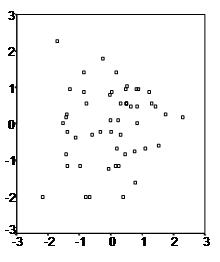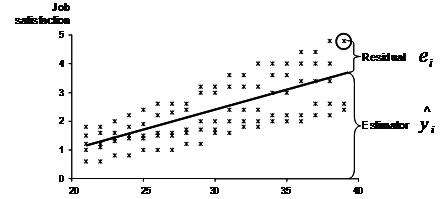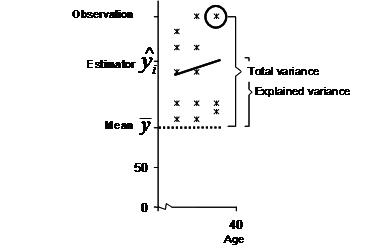How to Conduct Linear Regression
Linear Regression Analysis consists of more than just fitting a linear line through a cloud of data points. It consists of 3 stages – (1) analyzing the correlation and directionality of the data, (2) estimating the model, i.e., fitting the line, and (3) evaluating the validity and usefulness of the model.
First, a scatter plot should be used to analyze the data and check for directionality and correlation of data. The first scatter plot indicates a positive relationship between the two variables. The data is fit to run a regression analysis.


The second scatter plot seems to have an inverse U-shape this indicates that a regression line might not be the best way to explain the data, even if a correlation analysis establishes a positive link between the two variables.
However, most often data contains quite a large amount of variability in these cases it is up for decision how to best proceed with the data.

Need help with your analysis?
Schedule a time to speak with an expert using the calendar below.
User-friendly Software
Transform raw data into written, interpreted, APA formatted Regression results in seconds.
The first step enables the researcher to formulate the model, i.e. that variable X has a causal influence on variable Y and that their relationship is linear.
The second step of regression analysis is to fit the regression line. Mathematically least square estimation is used to minimize the unexplained residual. The basic idea behind this concept is illustrated in the following graph. In our example we want to model the relationship between age and job satisfaction. The research team has gathered several observations of self-reported job satisfaction and the age of the participant.

When we fit a line through the scatter plot, the regression line represents the estimated job satisfaction for a given age. However the real observation might not fall exactly on the regression line. We try to explain the scatter plot with a linear equation of y = b0 + b1x. The distance between the regression line and the data point represents the unexplained variation, which is also called the residual ei.
The method of least squares is used to minimize the residual.

The result of this equation would for instance be yi = 1 + 0.1 * xi. This means that for every year of age we would expect an increase of 0.1 in job satisfaction.
Now that we got our equation we evaluate the validity and usefulness of the equation. The key measure to the validity of the estimated linear line is R². R² = total variance / explained variance. The following graph illustrates the key concepts to calculate R². In our example the R² is approximately 0.6, this means that 60% of the total variance is explained with the relationship between age and satisfaction.

As you can easily see the number of observations and of course the number of independent variables increases the R². However over-fitting occurs when the model is not efficient anymore. To identify whether the model is fitted efficiently a corrected R² is calculated, which is defined:

*J is the number of independent variables and N the sample size.
As you can see the larger the sample size the smaller the effect of an additional independent variable in the model. In our example R²c = 0.6 – 1(1-0.6)/95-1-1 = 0.5957. Thus the model is quite well fitted with only one independent variable in the analysis.
The last step for the linear regression analysis is the test of significance. Linear regression uses two tests to test whether the found model and the estimated coefficients can be found in the general population the sample was drawn from. Firstly, the F-test tests the overall model. The null hypothesis is that the independent variables have no influence on the dependent variable. In other words the F-tests of the linear regression tests whether the R²=0. Secondly, multiple t-tests analyze the significance of each coefficient and the intercept. The t-test has the null hypothesis that the coefficient/intercept is zero.